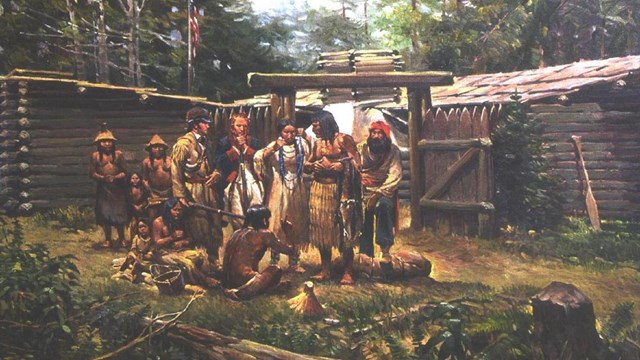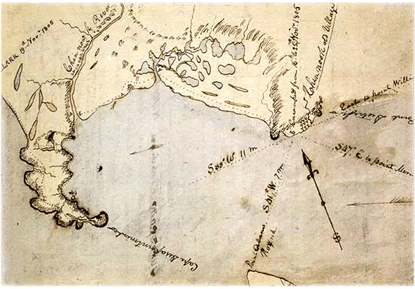The explorers started up the Missouri River from near St. Louis on May 14, 1804. After a tedious journey of five months, they wintered at Fort Mandan, which they built near the Mandan native american villages 1,600 miles up the Missouri. Here they acquired the interpreting services of Toussaint Charbonneau, a French-Canadian trader, and his young Shoshone wife, Sacagawea, accompanied by their infant son, Jean Baptiste.
In April 1805 the Corps of Discovery left Fort Mandan and followed the Missouri and its upper branches into an unknown world. Along the Lemhi River, in what is now Idaho, Sacagawea's people provided horses and a guide for the grueling trip over the Continental Divide. In November 1805, after some 600 miles of water travel down the Clearwater, Snake, and Columbia rivers, they finally sighted the Pacific.
Within 10 days of arriving on the coast, Lewis and Clark decided to leave their storm-bound camp on the north shore and cross the river, where elk were reported to be plentiful. Lewis, with a small party, scouted ahead and found a "most eligible" site for winter quarters. On December 10, 1805, the men began to build a fort about two miles up the Netul River (now Lewis and Clark River). By Christmas Day they were under shelter. They named the fort for the friendly local native american tribe, the Clatsop. It would be their home for the next three months.



